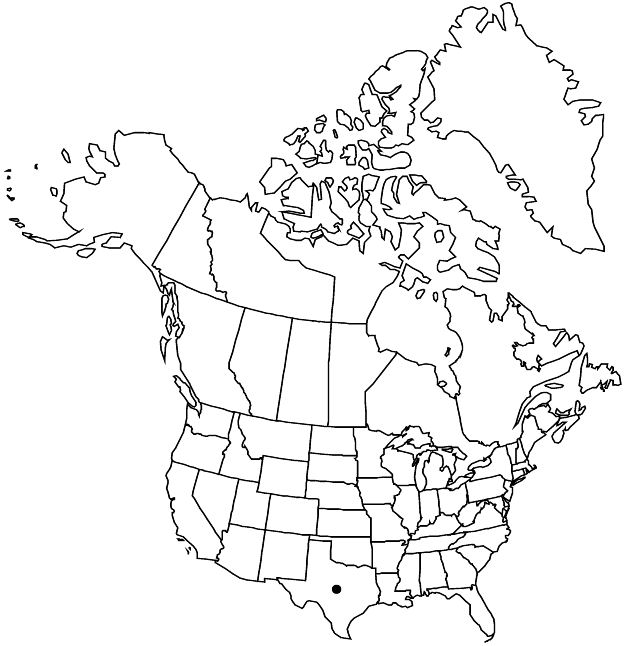Difference between revisions of "Euphorbia wrightii"
in War Department [U.S.], Pacif. Railr. Rep. 2(4): 174. 1857.
FNA>Volume Importer |
imported>Volume Importer |
||
| (6 intermediate revisions by 2 users not shown) | |||
| Line 1: | Line 1: | ||
{{Treatment/ID | {{Treatment/ID | ||
|accepted_name=Euphorbia wrightii | |accepted_name=Euphorbia wrightii | ||
| − | |accepted_authority=Torrey & A. Gray | + | |accepted_authority=Torrey & A. Gray |
|publications={{Treatment/Publication | |publications={{Treatment/Publication | ||
| − | |title=Pacif. Railr. Rep. | + | |title=in War Department [U.S.], Pacif. Railr. Rep. |
|place=2(4): 174. 1857 | |place=2(4): 174. 1857 | ||
|year=1857 | |year=1857 | ||
| Line 24: | Line 24: | ||
|elevation=500–1000 m. | |elevation=500–1000 m. | ||
|distribution=Tex.;Mexico (Coahuila). | |distribution=Tex.;Mexico (Coahuila). | ||
| − | |discussion=<p>Within the flora area, Euphorbia wrightii is endemic to the western Edwards Plateau and adjacent rolling plains in western Texas.</p> | + | |discussion=<p>Within the flora area, <i>Euphorbia wrightii</i> is endemic to the western Edwards Plateau and adjacent rolling plains in western Texas.</p> |
|tables= | |tables= | ||
|references= | |references= | ||
| Line 33: | Line 33: | ||
-->{{#Taxon: | -->{{#Taxon: | ||
name=Euphorbia wrightii | name=Euphorbia wrightii | ||
| − | + | |authority=Torrey & A. Gray | |
| − | |authority=Torrey & A. Gray | ||
|rank=species | |rank=species | ||
|parent rank=section | |parent rank=section | ||
| Line 45: | Line 44: | ||
|distribution=Tex.;Mexico (Coahuila). | |distribution=Tex.;Mexico (Coahuila). | ||
|reference=None | |reference=None | ||
| − | |publication title=Pacif. Railr. Rep. | + | |publication title=in War Department [U.S.], Pacif. Railr. Rep. |
|publication year=1857 | |publication year=1857 | ||
|special status= | |special status= | ||
| − | |source xml=https:// | + | |source xml=https://bitbucket.org/aafc-mbb/fna-data-curation/src/2e0870ddd59836b60bcf96646a41e87ea5a5943a/coarse_grained_fna_xml/V12/V12_100.xml |
|genus=Euphorbia | |genus=Euphorbia | ||
|section=Euphorbia sect. Alectoroctonum | |section=Euphorbia sect. Alectoroctonum | ||
Latest revision as of 19:12, 5 November 2020
Herbs, perennial with cylindric rootstock or elongated tubers. Stems erect, branched, densely clumped, previous year’s dead stems often persistent, 20–50 cm, glabrous. Leaves alternate, persisting, spreading or ascending; stipules 0.1–0.3 mm; petiole absent; blade linear to linear-filiform, (17–)20–40 × 1–2.5 mm, base cuneate, slightly sheathing stem, margins entire, apex broadly acute to rounded, abaxial surface glabrous or sparsely villous, adaxial surface glabrous; venation obscure, only midvein conspicuous on wider leaves. Cyathia usually in terminal dichasia, rarely pleiochasia; peduncle (3–)5–15 mm, all peduncles and cyathia persistent on plant, glabrous. Involucre campanulate, 1.5–2 × 1.8–2.5 mm, pilose; glands 5, green, broadly elliptic, 0.7–0.8 × 1 mm; appendages white to pink, orbiculate, 0.5–1 × 1.3–1.8 mm, coarsely erose. Staminate flowers 20–25. Pistillate flowers: ovary strigose to tomentose; styles 1 mm, 2-fid at apex. Capsules depressed-globose, 1 locule usually aborting, 2.5(–3) × 2.7–3.3(–5) mm, sparsely tomentose; columella 2.6–3 mm. Seeds gray-green to gray-brown, globose-ovoid, 2.2–2.9 × 1.8–2 mm, shallowly and obscurely pitted; caruncle absent.
Phenology: Flowering and fruiting spring–fall.
Habitat: Open grasslands and uplands, often on limestone outcrops.
Elevation: 500–1000 m.
Distribution

Tex., Mexico (Coahuila).
Discussion
Within the flora area, Euphorbia wrightii is endemic to the western Edwards Plateau and adjacent rolling plains in western Texas.
Selected References
None.